Обработка изображений, распознавание образов. Рубрика в журнале - Компьютерная оптика
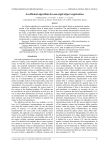
An efficient algorithm for non-rigid object registration
Статья научная
An efficient algorithm for registration of two non-rigid objects based on geometrical transformation of the template object to target object is proposed. The transformation is considered as warping of the template onto the target. To choose the most suitable transformation from all possible warps, a registration algorithm should satisfy deformation constraints referred to as regularization of non-rigid objects. In this work, we use variational functionals for affine transformations. With the help of computer simulation, the proposed method for searching the optimal geometrical transformation is compared with that of common algorithms.
Бесплатно
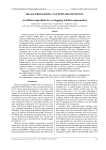
An efficient algorithm for overlapping bubbles segmentation
Статья научная
Image processing is an effective method for characterizing various two-phase gas/liquid flow systems. However, bubbly flows at a high void fraction impose significant challenges such as diverse bubble shapes and sizes, large overlapping bubble clusters occurrence, as well as out-of-focus bubbles. This study describes an efficient multi-level image processing algorithm for highly overlapping bubbles recognition. The proposed approach performs mainly in three steps: overlapping bubbles classification, contour segmentation and arcs grouping for bubble reconstruction. In the first step, we classify bubbles in the image into a solitary bubble and overlapping bubbles. The purpose of the second step is overlapping bubbles segmentation. This step is performed in two subsequent steps: at first, we classify bubble clusters into touching and communicating bubbles. Then, the boundaries of communicating bubbles are split into segments based on concave point extraction. The last step in our algorithm addresses segments grouping to merge all contour segments that belong to the same bubble and circle/ellipse fitting to reconstruct the missing part of each bubble. An application of the proposed technique to computer generated and high-speed real air bubble images is used to assess our algorithm. The developed method provides an accurate and computationally effective way for overlapping bubbles segmentation. The accuracy rate of well segmented bubbles we achieved is greater than 90 % in all cases. Moreover, a computation time equal to 12 seconds for a typical image (1 Mpx, 150 overlapping bubbles) is reached.
Бесплатно
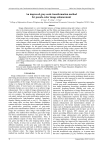
An improved gray-scale transformation method for pseudo-color image enhancement
Статья научная
Image enhancement is a very important process of image preprocessing and it plays a critical role in the improvement of image quality and the follow-up image analysis, which makes the research of image enhancement algorithm a hot research field. Image enhancement not only needs to strengthen image determination and recognition, but also needs to avoid the consequential color distortion. Pseudo-color enhancement is the technique to map different gray scales of a black-and-white image into a color image. As humans have extremely strong ability in distinguishing different colors visually and relatively weak capacity in discriminating gray scales, so, color the gray-scale changes which cannot be differentiated by human eyes so that they can tell them apart. The mapping function in conventional gray-scale transform method is not working well in dark and low-contrast images. So, this paper comes up with an improved gray-scale transformation algorithm. This algorithm can achieve the enhancement, preserve the image colors, process dark and low-contrast images, reinforce the enhancement and improve the blocking effect. The experiment proves that the enhanced image obtained by the method of this paper can have improved average brightness, natural colors and more detail information and it has good application value.
Бесплатно

An improved video watermarking algorithm with extraction using a mobile device camera
Статья научная
The use of screen-capture-resistant digital watermarks is a promising way to store information invisibly in a video stream for later retrieval by the user using a smartphone camera. However, the development of algorithms that implement this scenario is associated with the problem of balancing between the imperceptibility of embedding and robustness. A serious problem is the extraction of watermarks using a mobile device. Most people use the vertical positioning of the smartphone when shooting, which excludes the possibility of only marked video sequences entering the frame. The extraction algorithm first finds the screen area in the image and then extracts the watermark under various distortion conditions. This study proposes an approach to improve the efficiency of the algorithm for embedding digital watermarks into video data based on rectangular patterns, which provides resistance to screen shooting. The proposed approach to increasing the embedding imperceptibility provided an increase in the PSNR and SSIM values by 17.18 % and 7.90 %, respectively. The use of a neural network at the extraction stage reduced the BER value by 64.64 %.
Бесплатно
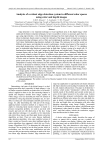
Analysis of a robust edge detection system in different color spaces using color and depth images
Статья научная
Edge detection is very important technique to reveal significant areas in the digital image, which could aids the feature extraction techniques. In fact it is possible to remove un-necessary parts from image, using edge detection. A lot of edge detection techniques has been made already, but we propose a robust evolutionary based system to extract the vital parts of the image. System is based on a lot of pre and post-processing techniques such as filters and morphological operations, and applying modified Ant Colony Optimization edge detection method to the image. The main goal is to test the system on different color spaces, and calculate the system’s performance. Another novel aspect of the research is using depth images along with color ones, which depth data is acquired by Kinect V.2 in validation part, to understand edge detection concept better in depth data. System is going to be tested with 10 benchmark test images for color and 5 images for depth format, and validate using 7 Image Quality Assessment factors such as Peak Signal-to-Noise Ratio, Mean Squared Error, Structural Similarity and more (mostly related to edges) for prove, in different color spaces and compared with other famous edge detection methods in same condition...
Бесплатно
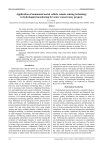
Статья научная
The article provides a brief introduction to hydrological monitoring and the methods of water body identification and flow velocity estimation based on unmanned aerial vehicle (UAV) remote sensing technology. Then, a case study of hydrological monitoring using UAV remote sensing technology was conducted on Gangnan Reservoir in Hebei Province. The effectiveness of the convolutional neural network (CNN) algorithm was verified, and measurements were made on the reservoir’s water area and average flow velocity in both flood and non-flood periods during 2020, 2021, and 2022. It was found that the CNN algorithm effectively identified water areas in UAV remote sensing images. Compared to non-flood periods, there was a significant increase in the water area of the reservoir during flood periods, as well as a noticeable increase in average flow velocity upstream; however, there was no significant change in average flow velocity downstream of the reservoir.
Бесплатно
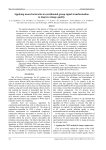
Applying neural networks in coordinated group signal transformation to improve image quality
Статья научная
The rapid development of the Internet of Things and wireless sensor networks combined with the introduction of image analysis systems and computer vision technologies has led to the emergence of a new class of systems – multimedia Internet of Things and multimedia wireless sensing networks. The combination of the specifics of the Internet of Things, which requires simultaneous and long-term operation of a large number of autonomous devices, with the need to transmit video data poses the problem of creating new energy-efficient methods of image compression. The paper considers applying coordinated group signal transformation as such an algorithm, which performs compression based on the input signals’ correlation. Correlation between the image color channels makes this possible. However, it was necessary to supplement this method by clustering the original images using machine learning methods for better image reconstruction at reception. The criterion for clustering was the change of image gradient. The use of radial neural network in the clustering algorithm increased the speed of the proposed method. The resulting algorithm provides at least fourfold image compression with high-quality image restoration. Moreover, for multimedia Internet of Things systems, in which quality losses are acceptable, it is possible to provide large compression ratios without increasing computational complexity, i.e., without increasing power consumption.
Бесплатно
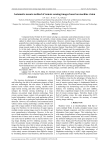
Automatic mosaic method of remote sensing images based on machine vision
Статья научная
Unmanned Aerial Vehicle (UAV) remote sensing is a commonly used technical means in modern science and technology, but currently, remote sensing images captured by UAVs need to be spliced to obtain more comprehensive information. However, current image stitching techniques generally have shortcomings such as a small number of extracted features, low matching accuracy, and poor stability. To address the above issues, this study proposes an improved remote sensing image mosaic model on the bias of the Scale Invariant Feature Transform (SIFT) algorithm. Firstly, in this study, aiming at the problem that traditional SIFT cannot meet the requirements of feature extraction and matching for unconventional remote sensing images and special texture images, normalized cross correlation (NCC) and Forstner operator are introduced to optimize it, namely, a SIFT-NCC model is constructed. On this basis, for remote sensing images with high resolution and a wide range, this study further proposes a remote sensing image automatic mosaic model that combines point features and line features. That is, a linear segment detector (LSD) is introduced to extract the line features of remote sensing images. The experimental verification results of the final SIFT-NCC-LSD show that the matching accuracy for remote sensing images with different characteristics can reach over 95 %. Therefore, SIFT-NCC-LSD has good applicability.
Бесплатно
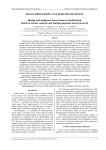
Статья научная
Breast cancer is a leading cause of death in women due to cancer. According to WHO, in 2018, it is estimated that 627.000 women died from breast cancer, that is approximately 15 % of all cancer deaths among women [3]. Early detection is a very important factor to reduce mortality by 25 - 30 %. Mammography is the most commonly used technique in detecting breast cancer using a low-dose X-ray system in the examination of breast tissue that can reduce false positives. A Computer-Aided Detection (CAD) system has been developed to effectively assist radiologists in detecting masses on mammograms that indicate the presence of breast tumors. The type of abnormality in mammogram images can be seen from the presence of microcalcifications and the presence of mass lesions. In this research, a new approach was developed to improve the performance of CAD System for classifying benign and malignant tumors. Areas suspected of being masses (RoI) in mammogram images were detected using an adaptive thresholding method and mathematical morphological operations. Wavelet decomposition is performed on the Region of Interest (RoI) and the feature extraction process is performed using a GLCM method with 4 statistical features, namely, contrast, correlation, entropy, and homogeneity. Classification of benign and malignant tumors using the MIAS database provided an accuracy of 95.83 % with a sensitivity of 95.23 % and a specificity of 96.49 %. A comparison with other methods illustrates that the proposed method provides better performance.
Бесплатно
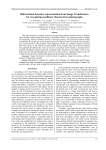
Статья научная
This paper proposes a modern system for recognizing sunflower diseases based on Bidirectional Encoder representation from Image Transformers (BEIT). The proposed system is capable of recognizing various sunflower diseases with high accuracy. The presented research results demonstrate the advantages of the proposed system compared to known methods and contemporary neural networks. The proposed visual diagnostic system for sunflower diseases achieved 99.57 % accuracy on the sunflower disease dataset, which is higher than that of known methods. The approach described in the work can serve as an auxiliary tool for farmers, assisting them in promptly identifying diseases and pests and taking timely measures to treat plants. This, in turn, helps in preserving and enhancing the yield. This work can have a significant impact on the development of agriculture and the fight against the global food shortage problem.
Бесплатно
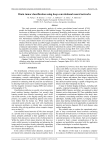
Brain tumor classification using deep convolutional neural networks
Статья научная
This study presents a comparative analysis of various convolutional neural network (CNN) models for brain tumor detection on MRI medical images. The primary aim was to assess the effectiveness of different CNN architectures in accurately identifying brain tumors. Multiple models were trained, including a custom-designed CNN with its specific layer architecture, and models based on Transfer Learning utilizing pre-trained neural networks: ResNet-50, VGG-16, and Xception. Performance evaluation of each model in terms of accuracy metrics such as precision, recall, F1-score, and confusion matrix on a test dataset was carried out. The dataset used in this study was obtained from the openly accessible Kaggle competition "Brain Tumor Detection from MRI." This dataset consisted of four classes: glioma, meningioma, no tumor (healthy), and pituitary, ensuring a balanced representation. Testing four models revealed that the custom CNN architecture, utilizing separable convolutions and batch normalization, achieved an average ROC AUC score of 0.99, outperforming the other models. Moreover, this model demonstrated an accuracy of 0.94, indicating its robust performance in brain tumor classification on MRI images.
Бесплатно
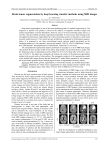
Brain tumor segmentation by deep learning transfer methods using MRI images
Статья научная
Brain tumor segmentation is one of the most challenging tasks of medical image analysis. The diagnosis of patients with gliomas is based on the analysis of magnetic resonance images and manual segmentation of tumor boundaries. However, due to its time-consuming nature, there is a need for a fast and reliable automatic segmentation algorithm. In recent years, deep learning methods applied to brain tumor segmentation have shown promising results. In this paper, a deep neural network model based on U-Net neural network architecture is proposed for brain glioma segmentation. It is proposed to use deep convolutional neural network models pre-trained on the ImageNet dataset as U-Net encoders. Among such models, VGG16, VGG19, Mobilenetv2, Inception, Efficientnetb7, InceptionResnetV2, DenseNet201, DenseNet121 were used. The computational experimental analysis performed in the paper on a set of MRI brain images showed that the best encoder model for the above deep models was the DenseNet121 model with the following values of segmentation metrics Mean IoU of 91.34 %, Mean Dice of 94.26 %, Accuracy of 94.22 %. The paper also comparatively analyses the results of the proposed segmentation method with several works of other authors. The comparative analysis of the segmentation results of the studied MRI images showed that the DenseNet121 model either surpassed or was comparable to the models proposed in the refereed papers in terms of segmentation accuracy metrics.
Бесплатно
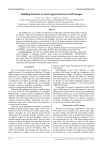
Building detection by local region features in SAR images
Статья научная
The buildings are very complex for detection on SAR images, where the basic features of those are shadows. There are many different representations for SAR shadow. As result it is no possible to use convolutional neural network for building detection directly. In this article we give property analysis of SAR shadows of different type buildings. After that, each region (ROI) prepared for training of building detection is corrected with its own SAR shadow properties. Reconstructions of ROI will be put in a modified YOLO network for building detection with better quality result.
Бесплатно
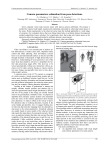
Camera parameters estimation from pose detections
Статья научная
Some computer vision tasks become easier with known camera calibration. We propose a method for camera focal length, location and orientation estimation by observing human poses in the scene. Weak requirements to the observed scene make the method applicable to a wide range of scenarios. Our evaluation shows that even being trained only on synthetic dataset, the proposed method outperforms known solution. Our experiments show that using only human poses as the input also allows the proposed method to calibrate dynamic visual sensors.
Бесплатно
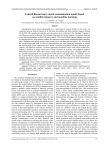
Central Russia heavy metal contamination model based on satellite imagery and machine learning
Статья научная
Atmospheric heavy metal contamination is a real threat to human health. In this work, we examined several models trained on in situ data and indices got from satellite images. During 2018-2019, 281 samples of naturally growing mosses were collected in the Vladimir, Yaroslavl, and Moscow regions in Russia. The samples were analyzed using Neutron Activation Analysis to get the contamination levels of 18 heavy metals. The Google Earth Engine platform was used to calculate indices from satellite images that represent summarized information about sampling sites. Statistical and neural models were trained on in situ data and the indices. We focused on the classification task with 8 levels of contamination and used balancing techniques to extend the training data. Three approaches were tested: variations of gradient boosting, multilayer perceptron, and Siamese networks. All these approaches produced results with minute differences, making it difficult to judge which one is better in terms of accuracy and graphical outputs. Promising results were shown for 9 heavy metals with an overall accuracy exceeding 89 %. Al, Fe, and Sb contamination was predicted for 3,000 and 12,100 grid nodes on a 500 km2 area in the Central Russia region for 2019 and 2020. The results, methods, and perspectives of the adopted approach of using satellite data together with machine learning for HM contamination prediction are presented.
Бесплатно
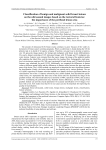
Статья научная
The amount of ultrasound (US) breast exams continues to grow because of the wider endorsement of breast cancer screening programs. When a solid lesion is found during the US the primary task is to decide if it requires a biopsy. Therefore, our goal was to develop a noninvasive US grayscale image analysis for benign and malignant solid breast lesion differentiation. We used a dataset consisting of 105 ultrasound images with 50 benign and 55 malignant non-cystic lesions. Features were extracted from the source image, the image of the gradient module after applying the Sobel filter, and the image after the Laplace filter. Subsequently, eight gray-level co-occurrence matrices (GLCM) were constructed for each lesion, and 13 Haralick textural features were calculated for each GLCM. Additionally, we computed the differences in feature values at different spatial shifts and the differences in feature values between the inner and outer areas of the lesion. The LASSO method was employed to determine the most significant features for classification. Finally, the lesion classification was carried out by various methods. The use of LASSO regression for feature selection enabled us to identify the most significant features for classification. Out of the 13 features selected by the LASSO method, four described the perilesional tissue, two represented the inner area of the lesion and five described the image of the gradient module. The final model achieved a sensitivity of 98%, specificity of 96%, and accuracy of 97%. Considering the perilesional area, Haralick feature differences, and the image of the gradient module can provide crucial parameters for accurate classification of US images. Features with a low AUC index (less than 0.6 in our case) can also be important for improving the quality of classification.
Бесплатно
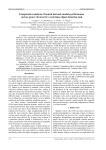
Статья научная
A computer vision based real-time object detection on low-power devices is economically attractive, yet a technically challenging task. The paper presents results of benchmarks on popular deep neural network models, which are often used for this task. The results of experiments provide insights into trade-offs between accuracy, speed, and computational efficiency of MobileNetV2 SSD, CenterNet MobileNetV2 FPN, EfficientDet, YoloV5, YoloV7, YoloV7 Tiny and YoloV8 neural network models on Raspberry Pi 4B, Raspberry Pi 3B and NVIDIA Jetson Nano with TensorFlow Lite. We fine-tuned the models on our custom dataset prior to benchmarking and used post-training quantization (PTQ) and quantization-aware training (QAT) to optimize the models’ size and speed. The experiments demonstrated that an appropriate algorithm selection depends on task requirements. We recommend EfficientDet Lite 512×512 quantized or YoloV7 Tiny for tasks that require around 2 FPS, EfficientDet Lite 320×320 quantized or SSD Mobilenet V2 320×320 for tasks with over 10 FPS, and EfficientDet Lite 320×320 or YoloV5 320×320 with QAT for tasks with intermediate FPS requirements.
Бесплатно

Статья научная
The study is a comparative analysis of two fast reflection symmetry axis detection methods: an algorithm to refine the symmetry axis found with a chain of skeletal primitives and a boundary method based on the Fourier descriptor. We tested the algorithms with binary raster images of plant leaves (FLAVIA database). The symmetry axis detection quality and performance indicate that both methods can be used to solve applied problems. Neither method demonstrated any significant advantage in terms of accuracy or performance. It is advisable to integrate both methods for solving real-life problems.
Бесплатно
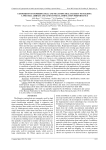
Статья научная
The main aim of this research work is to compare k-nearest neighbor algorithm(KNN)super-vised classification with migrating means clustering unsupervised classification (MMC) method on the performance of hyperspectral and multispectral data for spectral land cover classes and de-velop their spectral library in Samara, Russia. Accuracy assessment of the derived thematic maps was based on the analysis of the classification confusion matrix statistics computed for each classi-fied map, using for consistency the same set of validation points. We were analyzed and compared Earth Observing-1 (EO-1) Hyperion hyperspectral data to Landsat 8 Operational Land Imager (OLI) and Advance Land Imager (ALI) multispectral data. Hyperspectral imagers, currently avail-able on airborne platforms, provide increased spectral resolution over existing space based sensors that can document detailed information on the distribution of land cover classes, sometimes spe-cies level. Results indicate that KNN (95, 94, 88 overall accuracy and .91, .89, .85 kappa coeffi-cient for Hyp, ALI, OLI respectively) shows better results than unsupervised classification (93, 90, 84 overall accuracy and .89, .87, .81 kappa coefficient for Hyp, ALI, OLI respectively). Develop-ment of spectral library for land cover classes is a key component needed to facilitate advance ana-lytical techniques to monitor land cover changes. Different land cover classes in Samara were sampled to create a common spectral library for mapping landscape from remotely sensed data. The development of these libraries provides a physical basis for interpretation that is less subject to conditions of specific data sets, to facilitate a global approach to the application of hyperspectral imagers to mapping landscape. In addition, it is demonstrated that the hyperspectral satellite image provides more accurate classification results than those extracted from the multispectral satellite image. The higher classification accuracy by KNN supervised was attributed principally to the ability of this classifier to identify optimal separating classes with low generalization error, thus producing the best possible classes’ separation.
Бесплатно
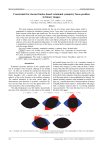
Constraints for Jaccard index-based rotational symmetry focus position in binary images
Статья научная
This study proposes analytical estimate for the size of a binary raster figure region which is guaranteed to contain the rotational symmetry focus. Focus here is the point a maximum Jaccard index between initial figure and rotated one. The size of the region is determined by the lower estimate of the intersection area during the rotation of the approximating primitives, considering the sizes of the inner and outer parts of the figure relative to the primitive. The smallest circumscribed circle or ellipse and sets of concentric circles and ellipses produced by the principal component analysis were used as the approximating figure. To verify the hypothesis that the size of the region is insignificant compared to the area of the figure, we numerically simulated the proposed method with test image datasets.
Бесплатно

